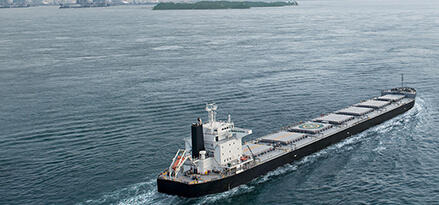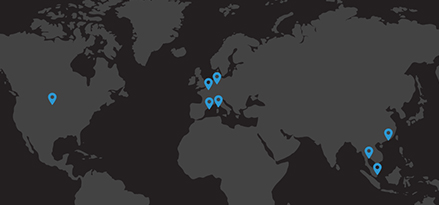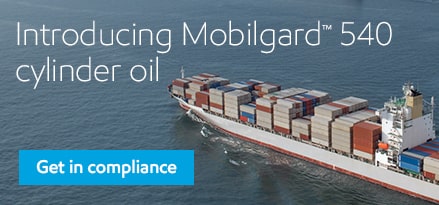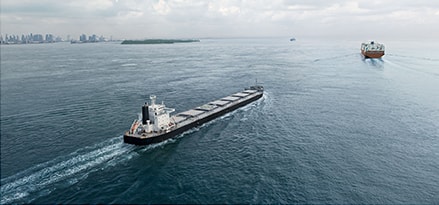The International Maritime Organization (IMO) has mandated a global 0.50% cap on the maximum level of sulphur in marine fuel. This new cap represents a significant reduction – down from the current 3.50% limit – and presents the marine industry with compliance challenges.
Starting from 1 January, 2020, vessel operators will need to use a compliant fuel, or have a scrubber fitted if they wish to continue burning high-sulphur fuel oil. This ruling does not affect Emission Control Areas (ECAs), where a 0.10% sulphur fuel is still required.
ExxonMobil anticipates that the vast majority of the industry will choose a low-sulphur fuel to meet the new IMO 2020 cap. However, there is no single route to compliance. Options include:
- ExxonMobil’s range of low-sulphur EMF.5™ Engineered Marine Fuels
- Low-sulphur distillates such as marine gas oil (MGO)
- Premium Emission Control Area (ECA) fuels
- The continued use of high-sulphur fuel oil (HSFO) in conjunction with a scrubber
- Liquefied natural gas (LNG) or liquefied petroleum gas (LPG)
Operators will need to make their decisions on a vessel-by-vessel basis. Determining the most effective option will be based on an evaluation of factors such as vessel type, route, age and engine. ExxonMobil will also supply a complementary range of cylinder and engine oils. These will include:
- Mobilgard™ 540, a new 40BN formulation for vessels using low-sulphur fuels
- Mobilgard™ M420, a newly formulated 20BN Trunk Piston Engine Oil (TPEO)
- A high-BN cylinder oil for vessels using a scrubber
- An ultra-low-BN grade for vessels using LNG
Successful compliance with the IMO 2020 emission regulation requires more than fuel selection – preparation for the switchover is also essential.
Initially, some fuel types may be scarce. Vessel operators will therefore need to plan their bunkering in advance as we move from fuel procurement to fuel management. As a result of fuel choice, operators may need to revisit their cylinder oil selection.

Exclusive webinar and switchover guide
As we approach the final run-up to the 2020 deadline, in order to continue assisting vessel operators with preparations, we ran a webinar featuring the top 10 takeaways from our 2020 Symposium series. This is now available on demand!
The webinar, held in conjunction with industry expert Unni Einemo, Director, IBIA, is now available here. It covers a range of topics, from fuel compliance options to help on choosing appropriate cylinder and engine oils for safe and efficient vessel operations.
Attendees will also receive a copy of our ‘Planning for 2020’ switchover guide, which provides invaluable information on a number of issues, including:
- The need for communication throughout the purchasing process
- Key considerations for fuel selection ahead of the sulphur cap implementation
- Technical challenges to consider when switching to compliant fuels
- Inventory management and technical advice on switching to lubricants that complement low-sulphur fuels

How can ExxonMobil help you?
ExxonMobil has the solutions and expertise to help you make the right choices as you prepare for the IMO 2020 deadline.
Our suite of compliant fuels announced to date:- Meet ISO 8217:2017 specifications
- Have all passed stringent fit-for-use testing

Availability
Our compliant fuels are now fully available in Singapore and Thailand, along with Antwerp, Rotterdam, Genoa, Marseille and Zeebrugge. More locations are being considered.
Questions? Contact one of our expert team members using the form below:
Insights from industry leaders
ExxonMobil continues to bring the industry together in talking about the Journey to 2020 and beyond. In our Talking Points series, we spoke to marine experts about 2020-focused topics including routes to IMO compliance, fuel solutions and more.
Check out the playlist feature to watch all six videos in the Talking Points series, shot around the world with well-respected experts.

Make IMO 2020 compliance stress-free
Mobil℠ Cylinder Condition Monitoring acts as a heart rate monitor for your fleet, helping to ensure compliance with the International Maritime Organization’s (IMO) 0.50% sulphur cap on emissions.
See how it works




